| Modes
of transport in Peru
|
|
| Home | |
|
I'm fascinated by the ways in which people accomplish
transport--hauling cargo or themselves
In poorer countries it seems that those ways are more varied, and often much more appropriate to the task at hand And Peru is a poor country. In cities like Lima, the range of options includes those available in any North American city--a proliferation of private cars, large buses, etc. But even there, there is a substrata of more modest choices--human powered vehicles, and light motorized vehicles |
|
|
Arguably the simplest of the human-powered instruments, the lowly wheelbarrow of an Ayacucho fruit vendor |
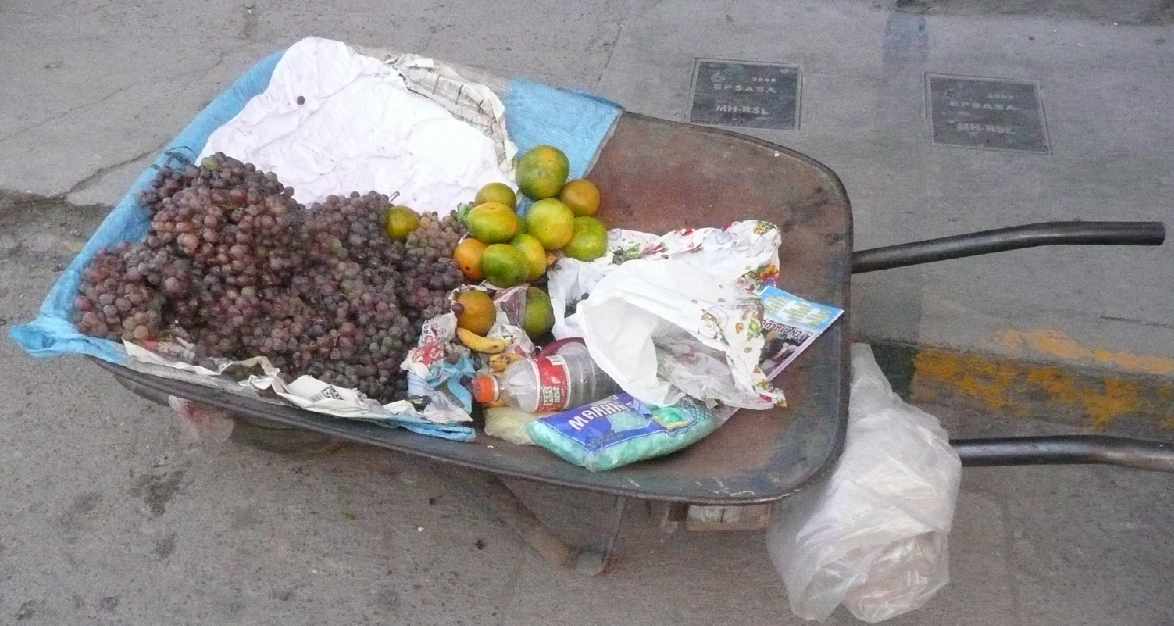
|
|
Or Linda in Ayacucho, with her mobile restaurant |
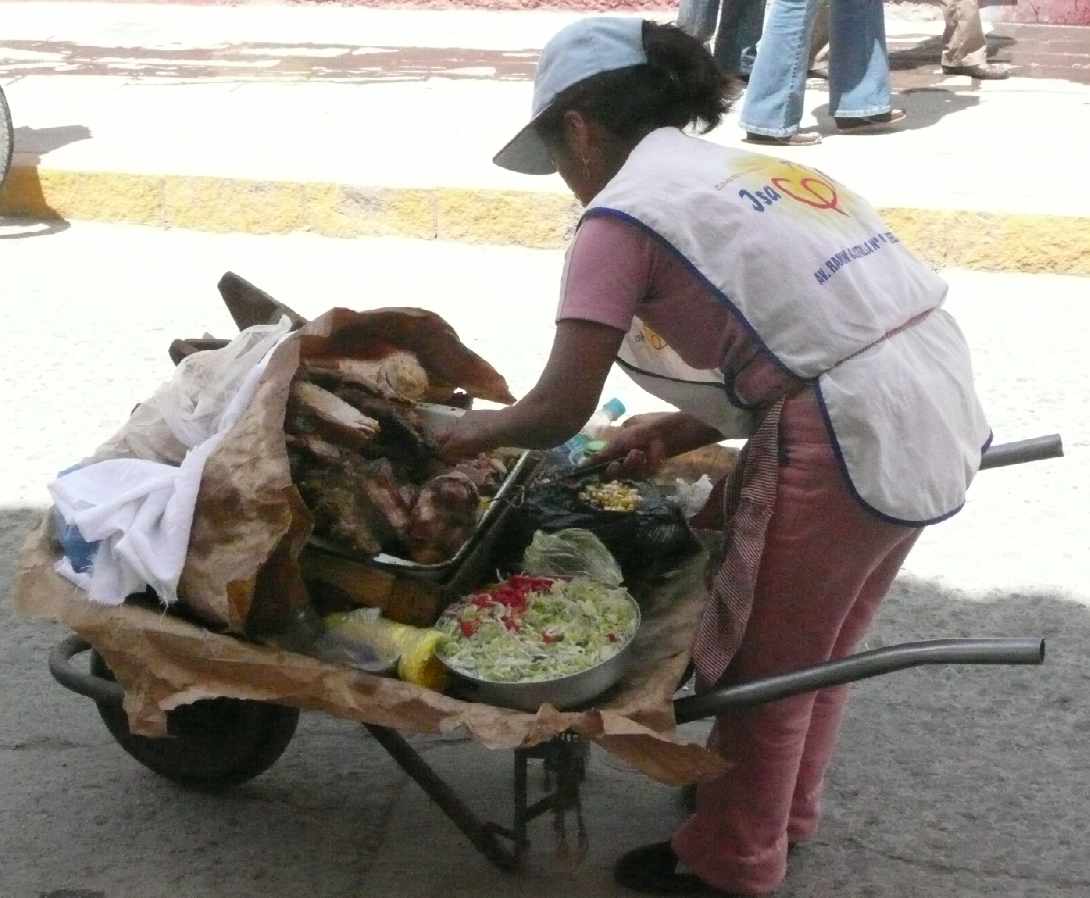
|
|
Bicycles are ubiquitous in Peru, often tailored to a specific need |

|
|
...or simply pressed into service when needed |

|
|
And then add a third wheel
|
|
|
I once saw (in Nova Scotia) a bicycle with hand pedals as well as foot pedals. But this was the first time I saw one with only hand pedals--obviously suited to this man's physical condition |
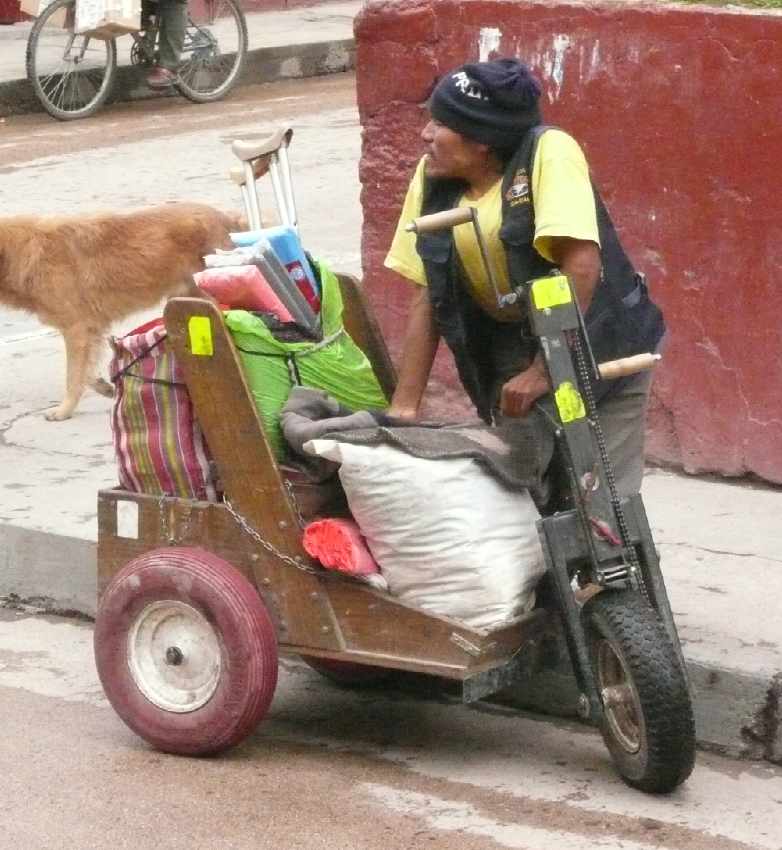
|
|
I saw only two of these rigs in Peru, both in Ayacucho
|
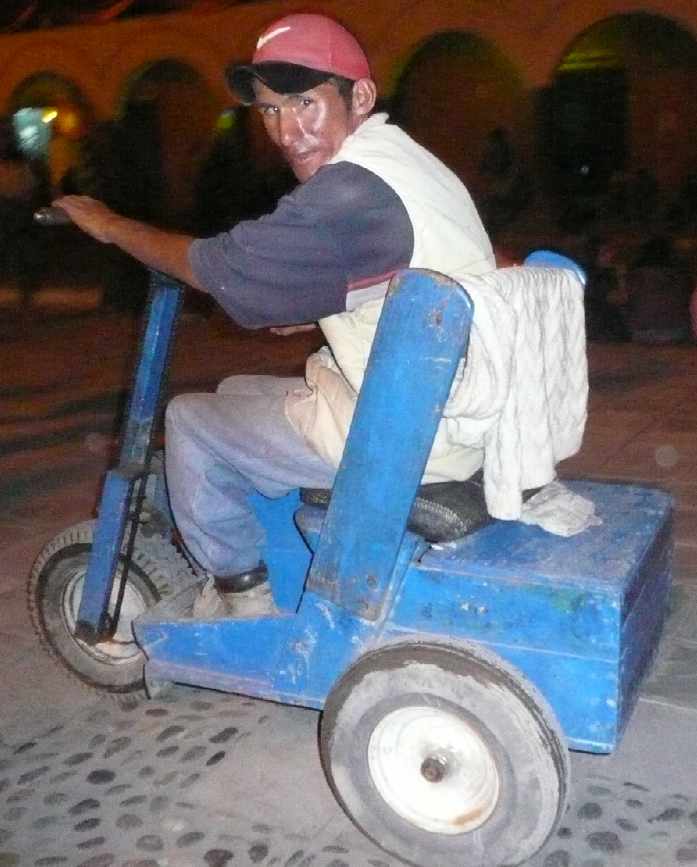
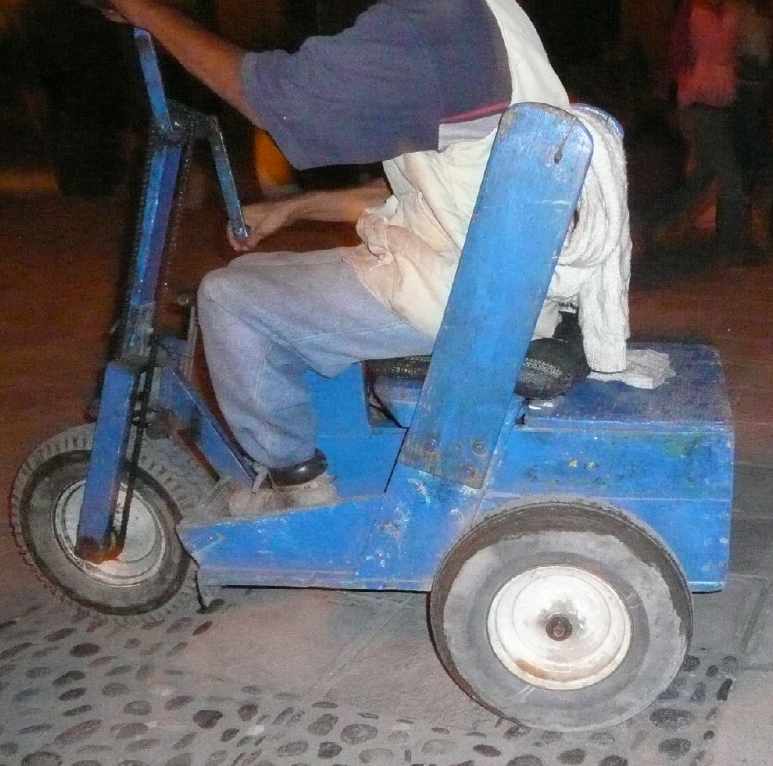
|
|
But in Peru, this was the vehicle that provided the most flexibility and utility |

|
|
Hauling all manner of loads |
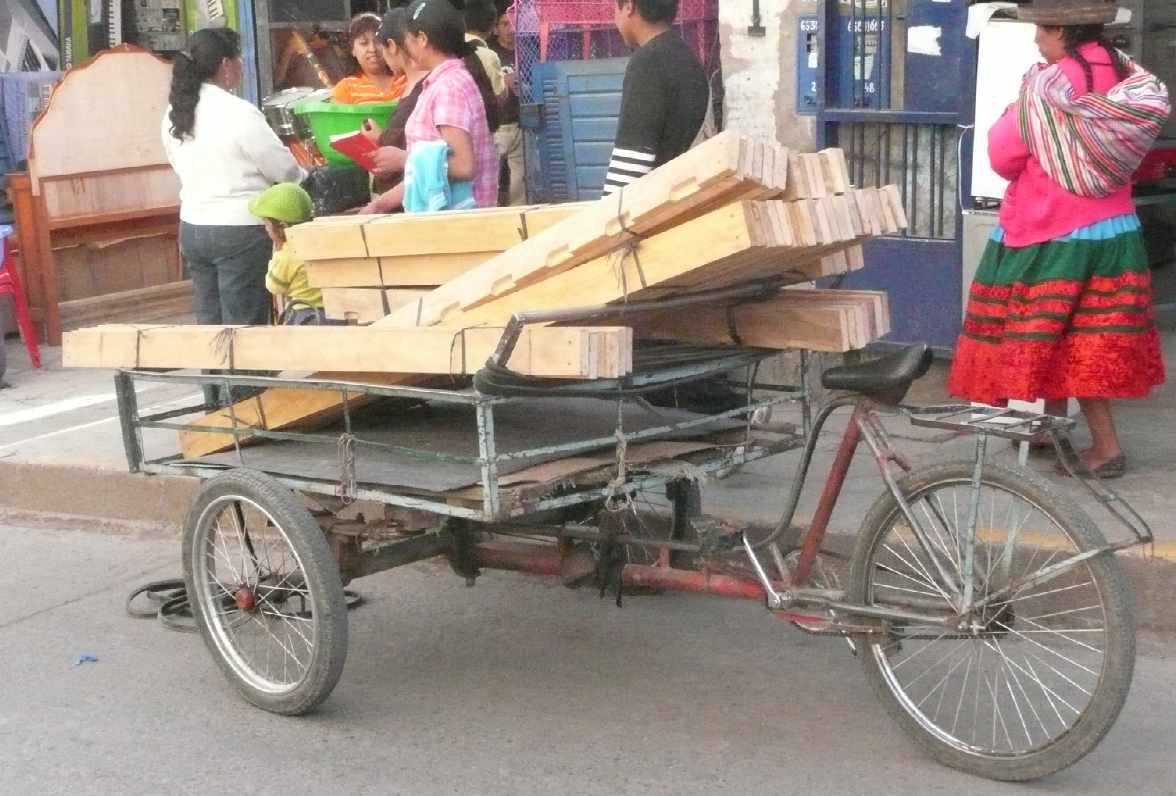
|
|
and overloads |
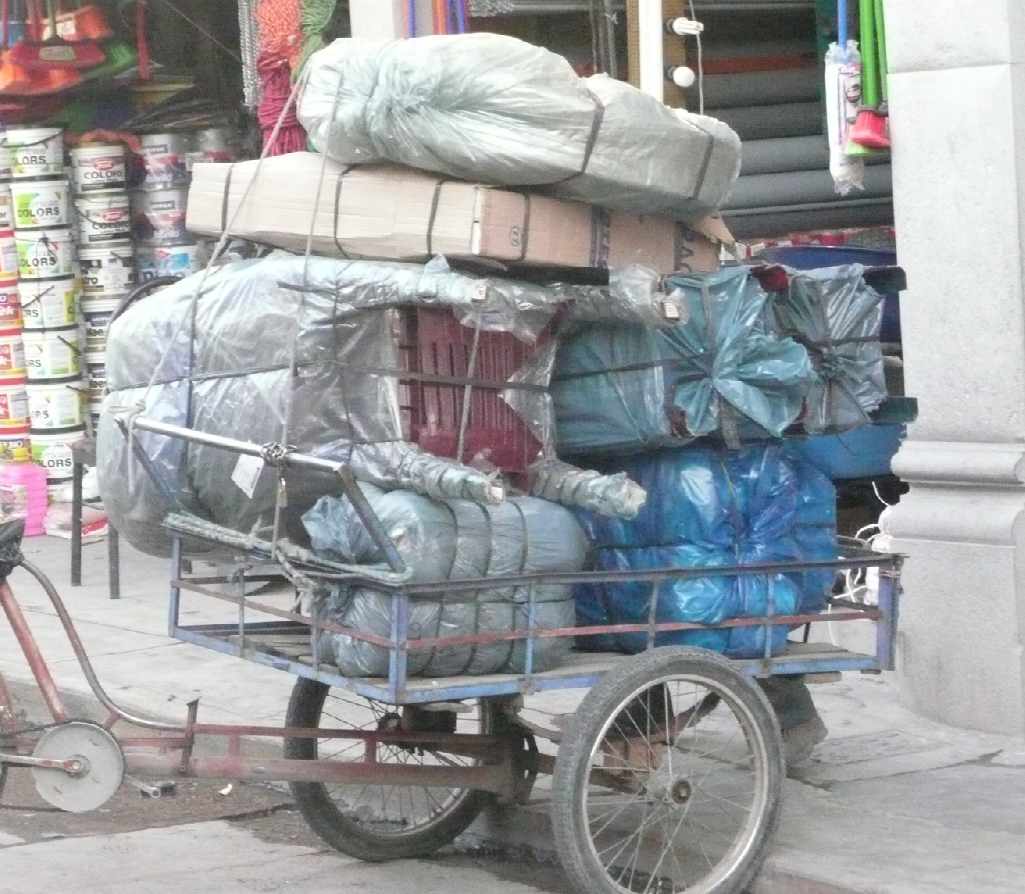
|
|
or providing an instant retail outlet... |
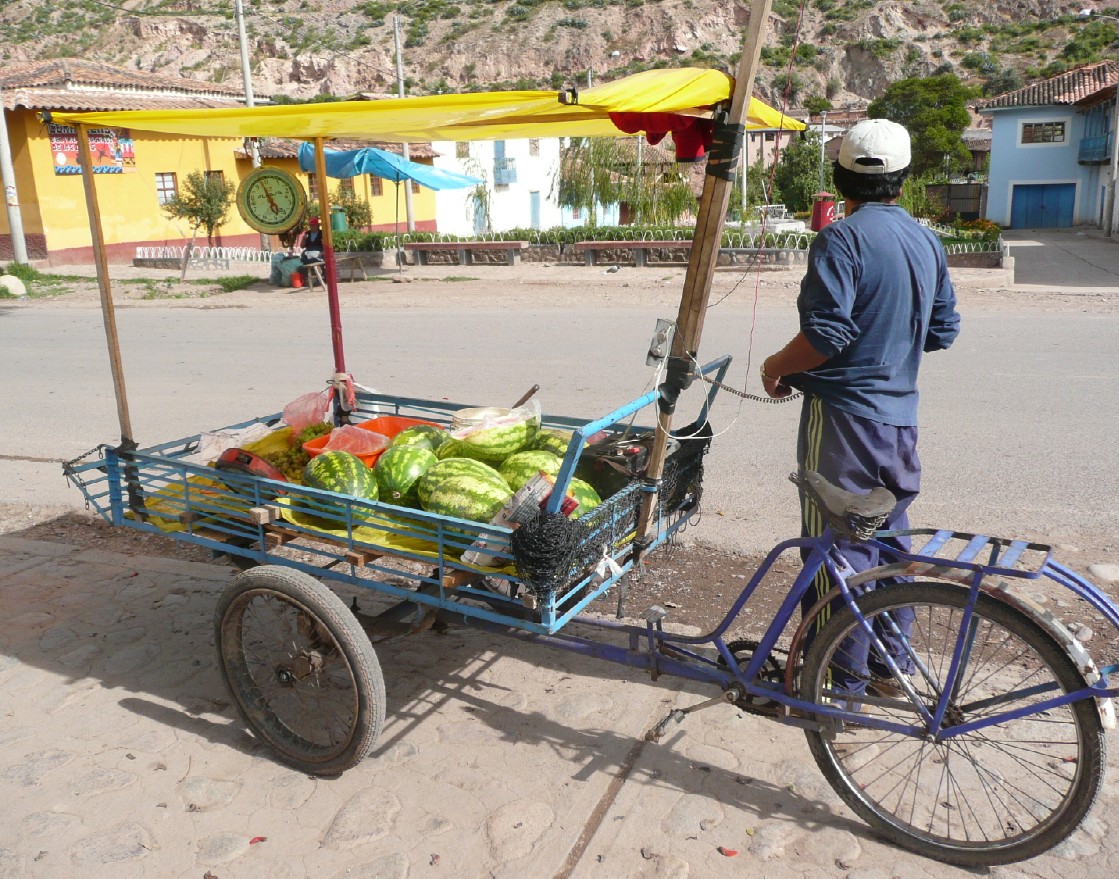
|
|
...in this case assisted by a loudspeaker system, in Urubamba |
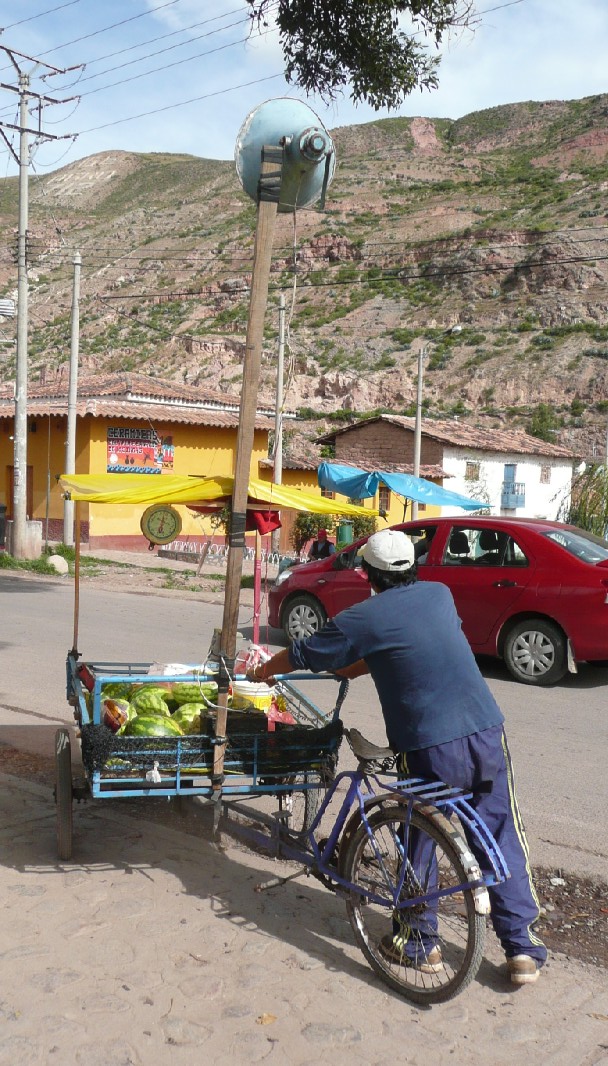
|
|
or a slightly more elegant mobile store, as with this woman in Tarma |
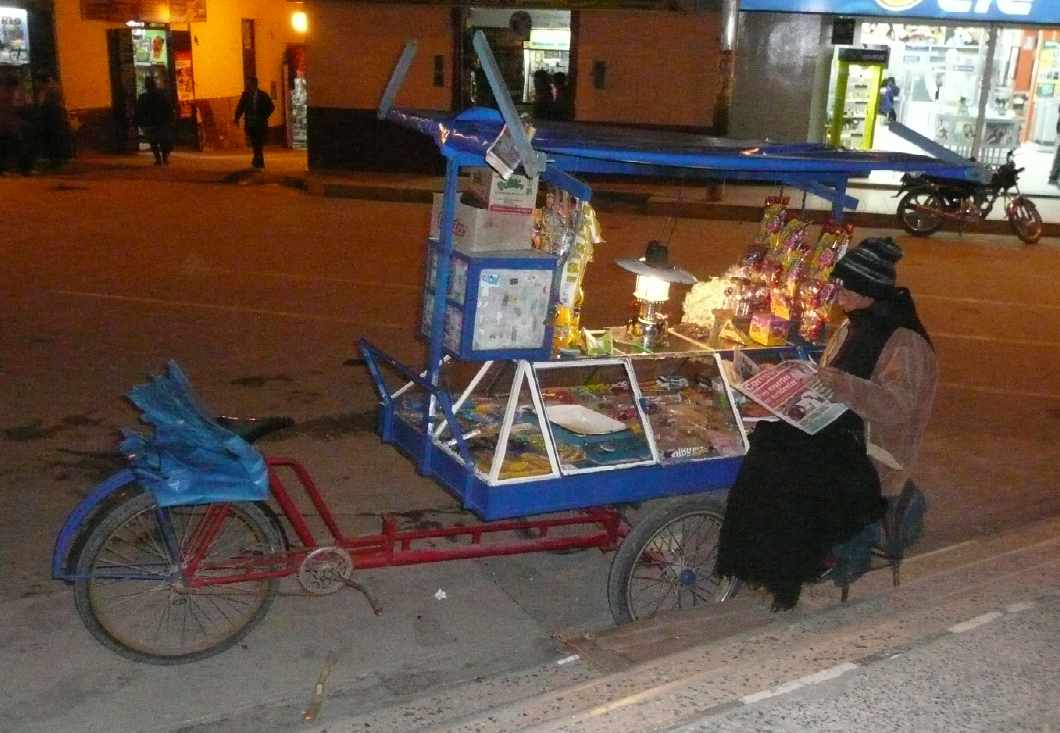
|
|
or this man in Ayacucho |
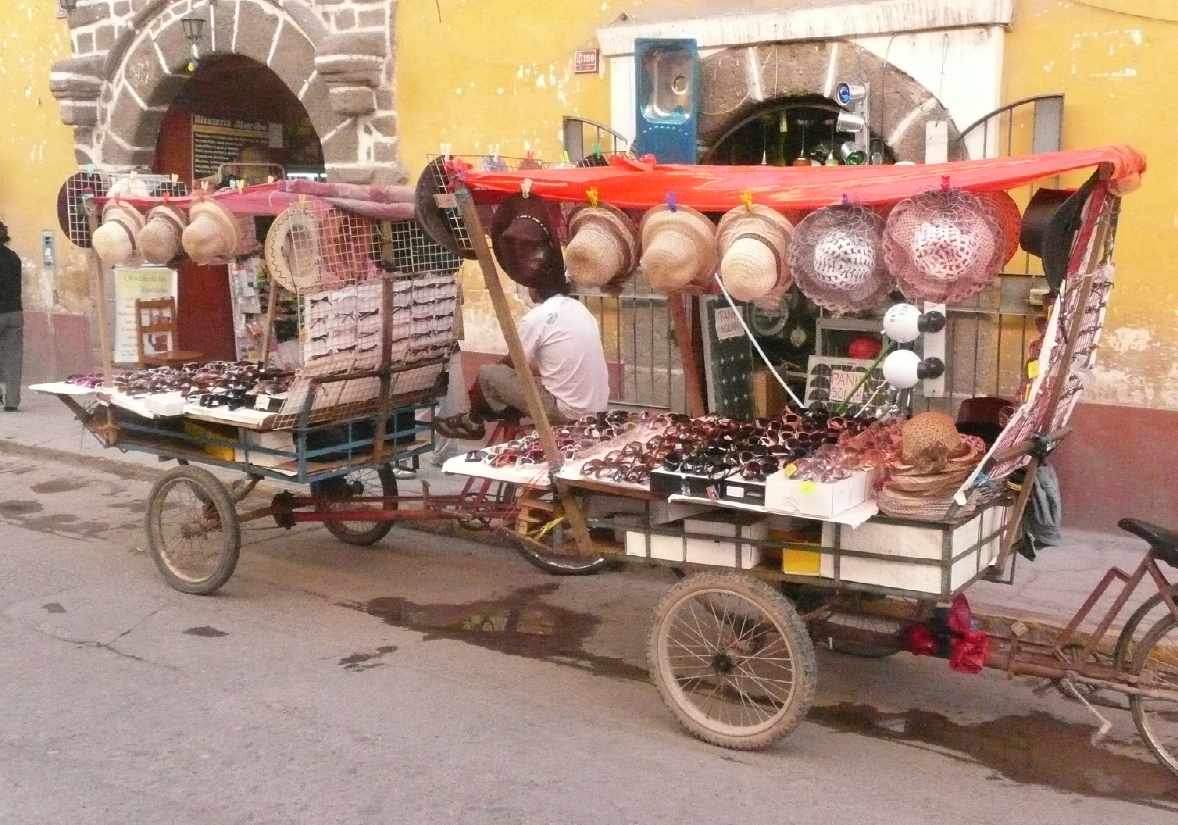
|
|
or just providing the owner a respite from the day's toil, as with Ricardo in Pisco |
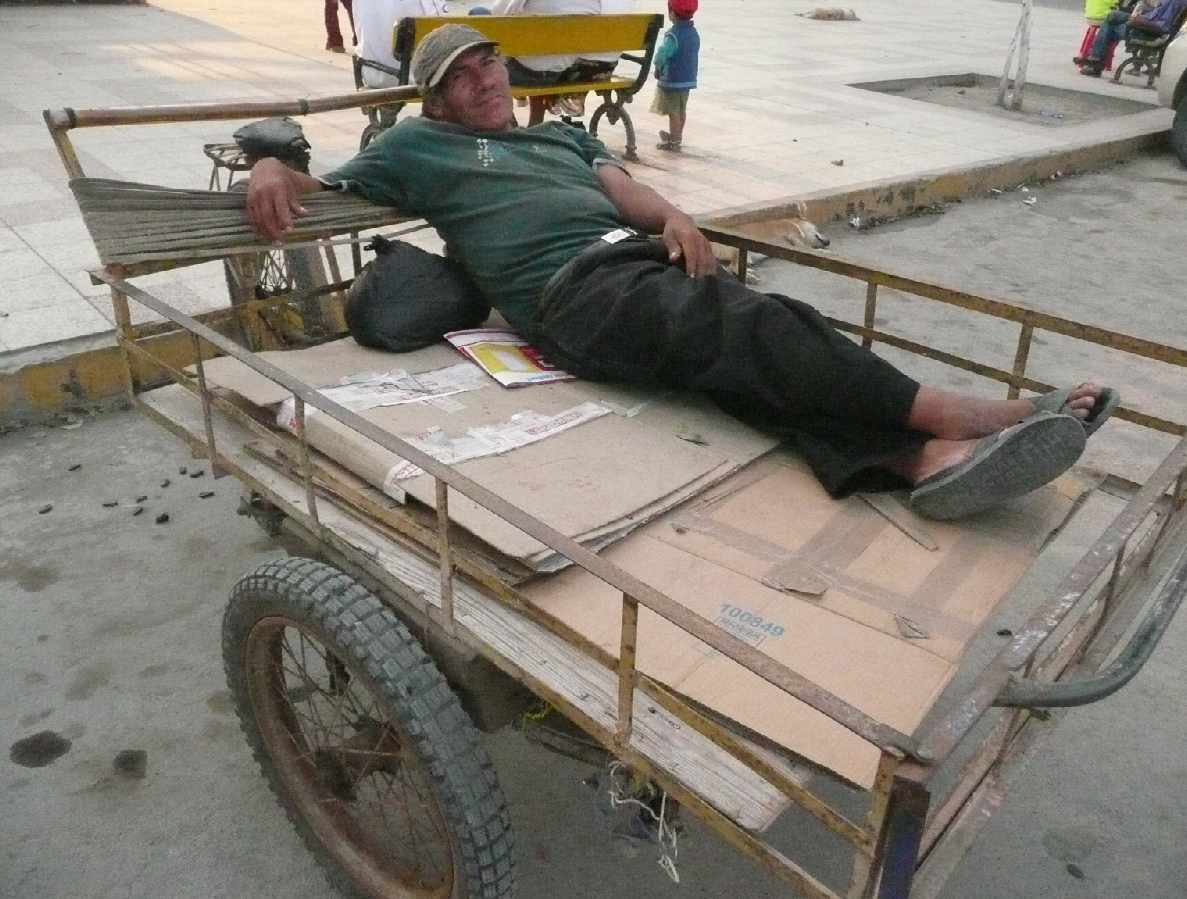
|
|
In towns near Puno, they're pressed into service as taxis, reminiscent of some Asian countries |
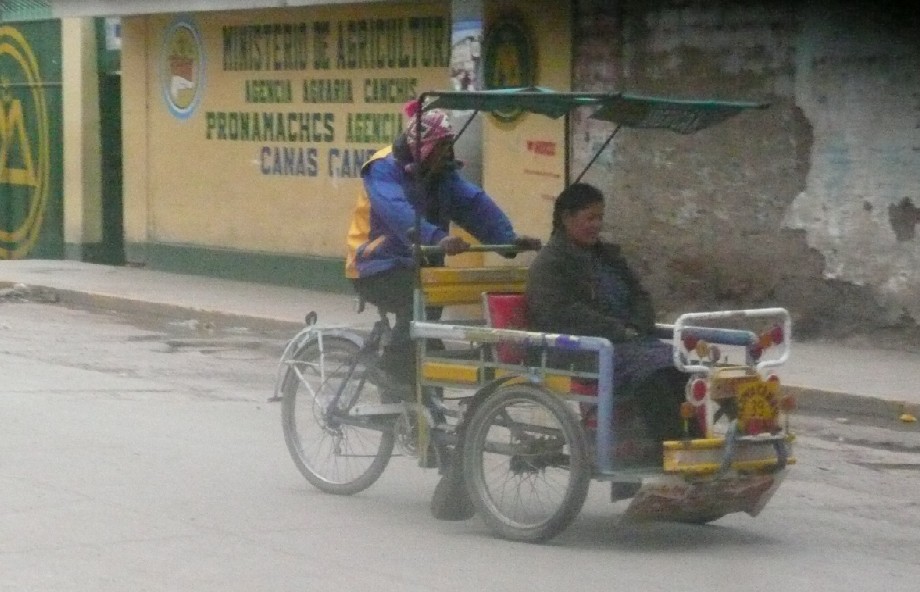
|
| Now moving up a space in the transport chain, we add an internal combustion engine | |
|
Again, starting with two wheels, nicely tailored for a specific task (delivering liquid propane) |
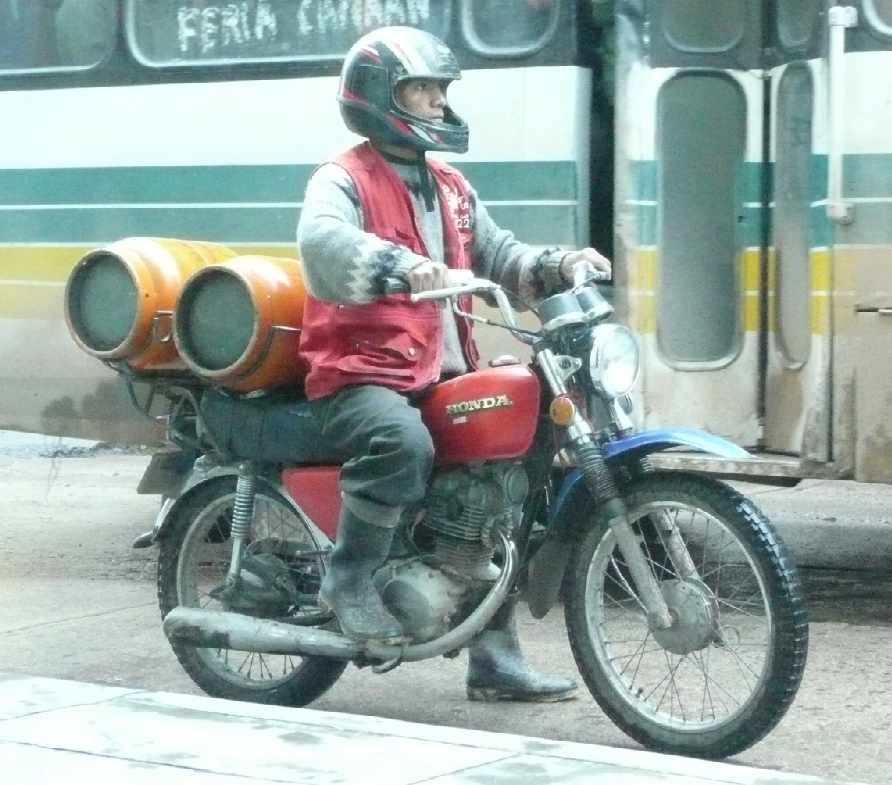
|
|
And adding a third wheel, to collect trash in Tarms (the text on the side reads "Tarma I want you clean") This is one of my all-time favorite vehicles
|
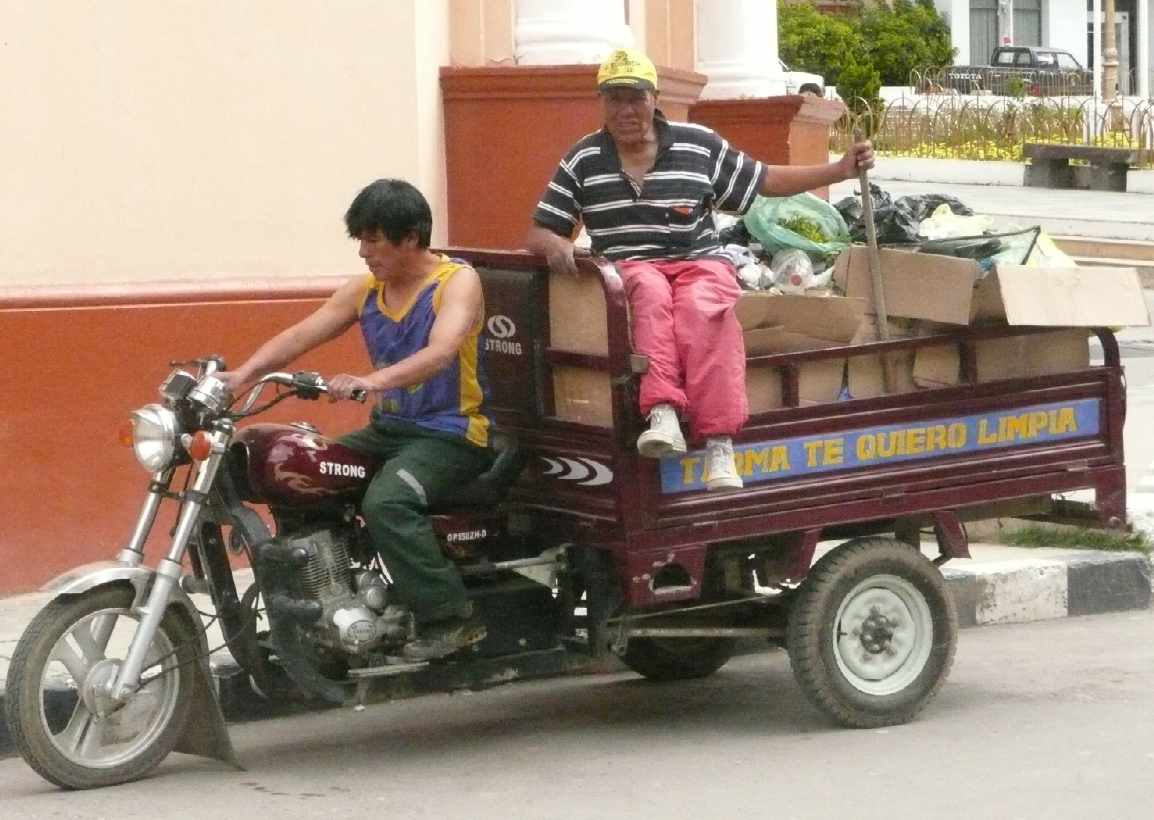
|
|
or put the engine in the rear, and bring your produce to market in Lima |
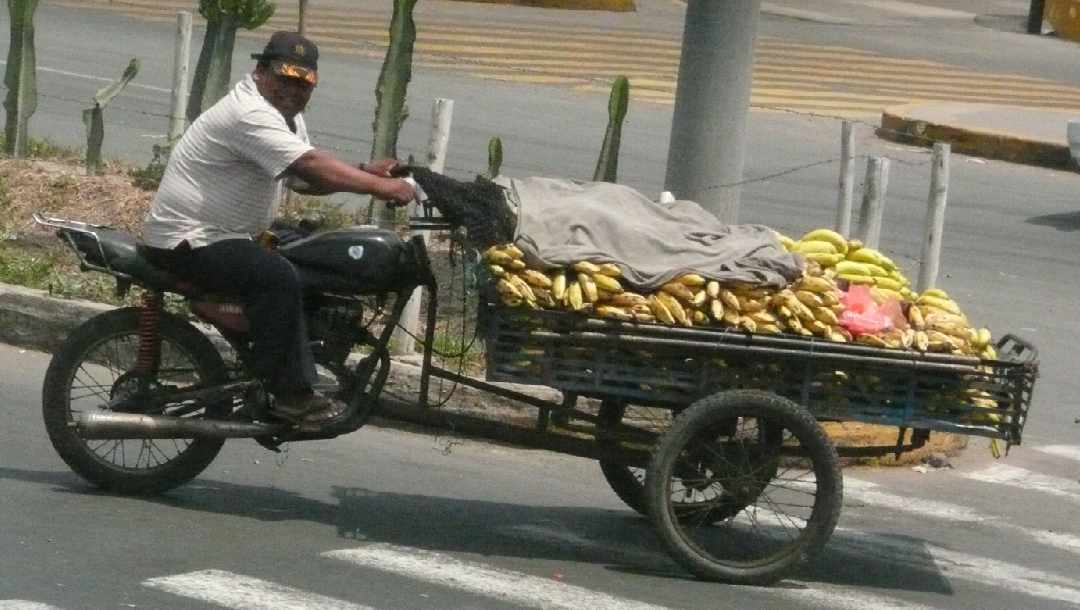
|
|
And then there are the motos, the three-wheeled taxis that proliferate in Peru |
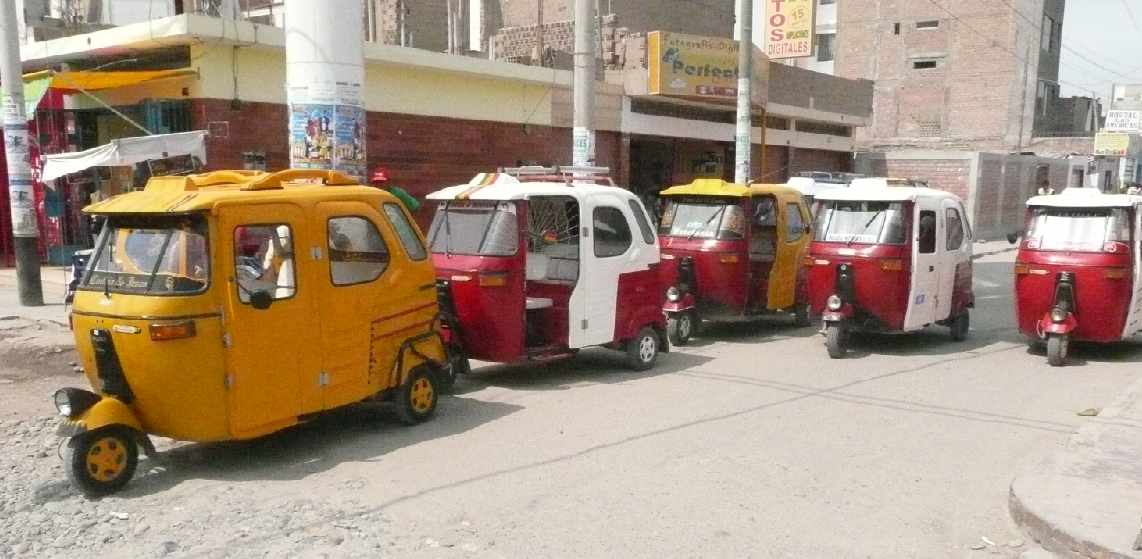
|
|
Of these, I like the ones with larger tires. I've seen these taken to the highways, at speeds up to 40 or 50 mph |

|
|
The odd thing was that when I saw this pickup in Ayacucho, it seemed out of place--being now accustomed to seeing the more modest modes of transport |
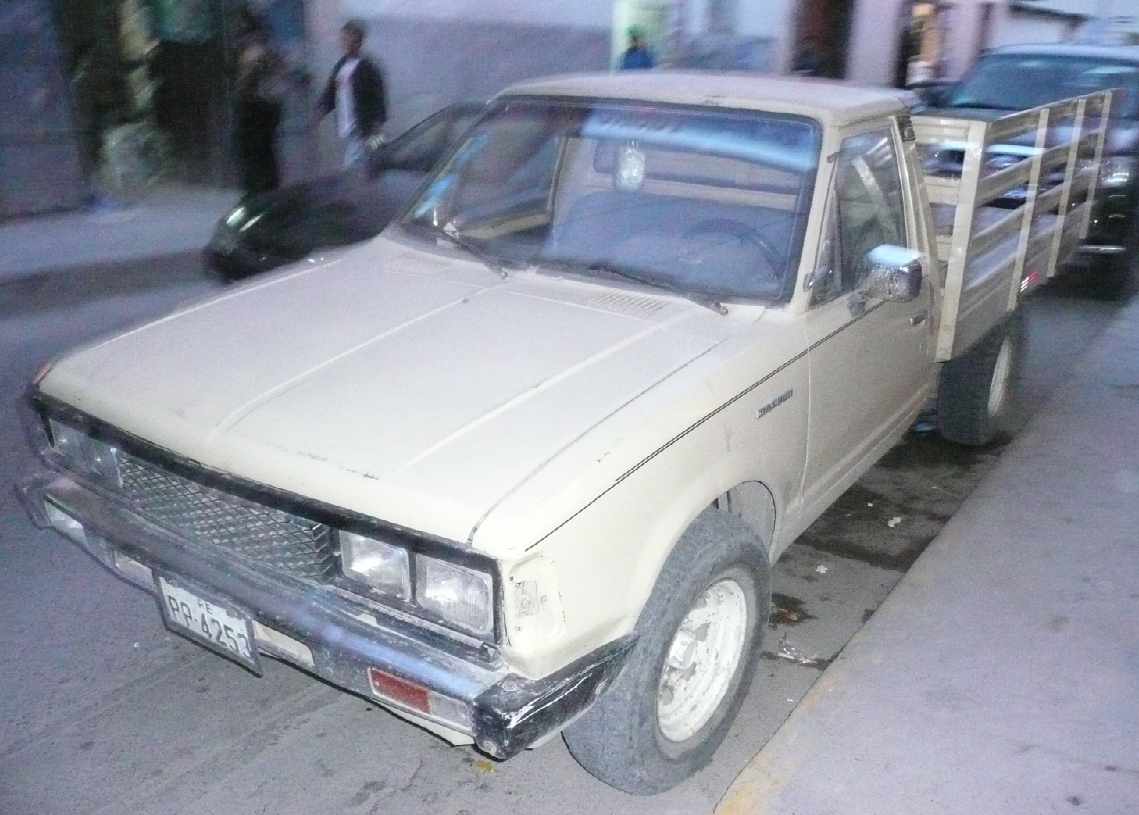
|
| Lee's home page | |
| Peru blog index | |